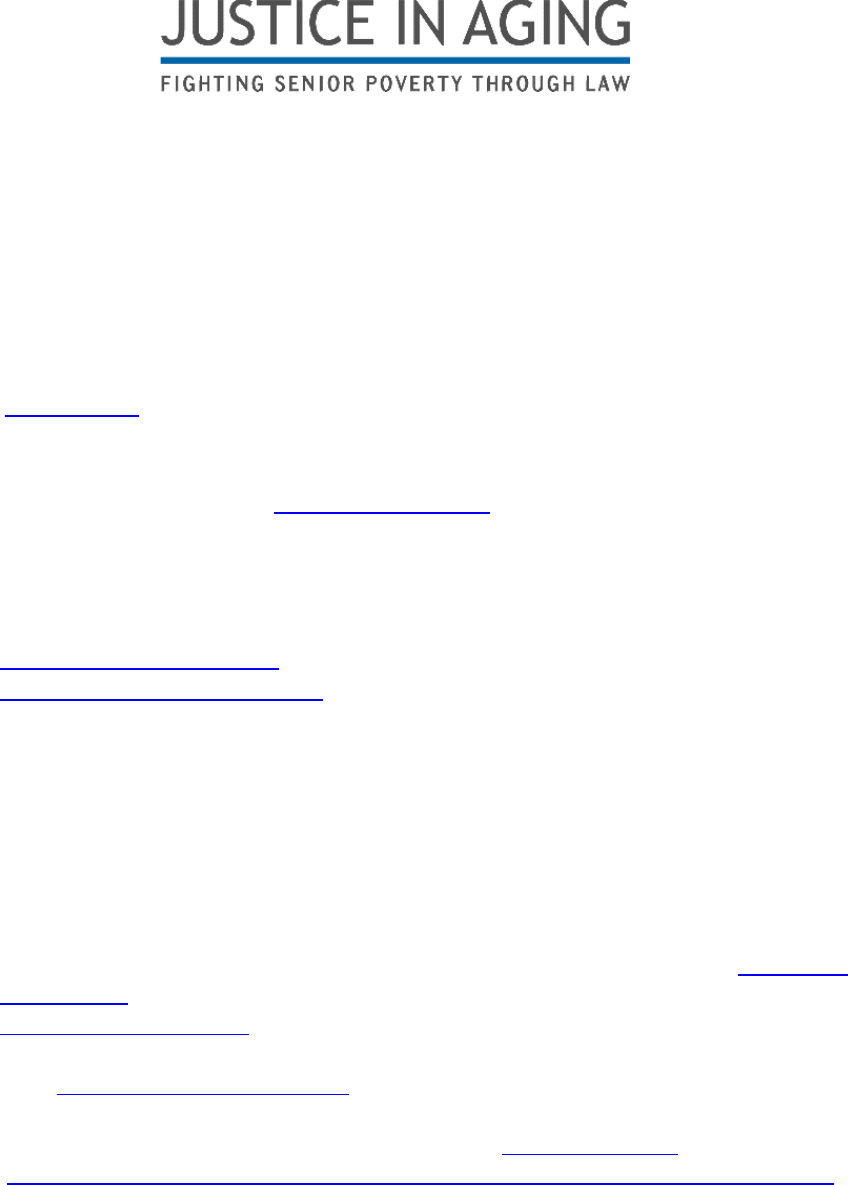
California Low Income Housing Tax Credit
(LIHTC) Programs: Legal Authority and
Resources
Federal Statute:
• 26 U.S.C. § 42
Federal Regulations:
• U.S. Treasury regulations at 26 C.F.R. §1.42 et seq.
Federal Sub Regulatory Guidance:
• IRS Guide for Completing Form 8823 Low-Income Housing Credit Agencies Report of
Noncompliance or Building Disposition. (“8823 Guide”)
• IRS Revenue Ruling: 2004-82
• HUD annual AMI figures for 2022. Choose “California”, then “county”
• LIHTC property owners must also enter into an “extended low-income housing
commitment,” i.e., a regulatory agreement, with the state housing agency that must be
recorded with deed.
• Regulatory agreement must give tenants a private right of action to enforce rent
restrictions and good cause protections for as long as the project remains in the LIHTC
program.
California State law and guidance:
• Tax Credit Allocation Committee (TCAC) Qualified Allocation Plan (QAP), at: CCR Title 4,
Div. 17, Ch. 1.
• CTAC Compliance manual (guidance only) – See LIHTC evictions in CA, (V. below) for
definition of what constitutes “good cause” reasons to evict LIHTC tenants.
• CTAC LIHTC Rent Requirement: FAQ
• Advance Notice requirements to tenants and relevant agencies when LIHTC income and
rent restrictions are set to expire: Cal. Gov. Code § 65863.10(a)(3)(E).
(https://www.hcd.ca.gov/policy-and-research/preserving-existing-affordable-housing).
LIHTC Evictions in CA:
a) Good Cause is required to evict, but term is not defined. 26 U.S.C. §42(h)(6) (E)(ii)(I);
Rev. Rul. 2004-82, Q&A#5.

2
o CA TCAC compliance manual provides that “[g]enerally, “good cause” is defined
as “the serious or repeated violations of a material term of the lease”, as that
definition is applied with respect to federal public housing.” See, CTCAC
Compliance Manual, at p. 12.
o IRS guidance explains that good cause is determined by applicable state and local
law, and may include nonpayment of rent; violations of the lease or rental
agreement; destruction or damage to the property; interference with other
tenants or creating a nuisance; or using the property for an unlawful purpose.
Rev. Rul. 2004-82, Q&A#5.
o CA LIHTC project residents have the right to enforce this good cause provision in
State court.
b) Common good cause reasons for eviction:
o Over-Income:
When a tenant’s income increases up to 140% of the applicable income
limitation, the rules are clear that the tenant can remain in the unit at the
subsidized rent and the owner can continue to claim its credits, provided
the person was income-qualified at move-in.
When a tenant’s income increases above 140% of the applicable income
limitation, the Next Available Unit Rule (NAUR) applies. Under the NAUR,
the over-income unit continues to be treated as a low-income unit,
provided the next available unit of comparable size is leased to an
income-qualified individual. 26 C.F.R. § 1.42-15(c).
Federal rules do not expressly prohibit an owner from evicting an over-
income tenant. Thus, the owner could argue that the program was
intended to serve the lowest-income tenants possible and for policy
reasons the unit should not be occupied by someone making more than
the applicable income limitation.
o Nonpayment of rent resulting from unpaid fees:
Nonpayment of rent claims often begin with a failure to pay a fee. The
following month, a portion of rent paid is often applied toward the
unpaid fee, resulting in a tenant owing partial rent, plus any late fees.
When the tenant pays rent the following month, payment is again
applied to rent and late fees owed, causing the tenant to owe even more
rent, with late fees charged once again. This continues month after
month until the tenant owes large amounts and faces eviction for
nonpayment.
o Fees LIHTC Housing Providers CANNOT charge:
LIHTC program rules prohibit an owner from charging a tenant for
facilities and amenities whose construction or rehabilitation was financed
with tax credits, e.g., laundry room, storage room, parking, etc. (26 U.S.C.
§ 42(d)(4)(B))
Advocates should review owner ledgers to ensure that past due rent is
not the result of unpaid fees the tenant is not responsible for paying
under the rule above.

3
Sources of Information on LIHTC properties
• CA Tax Credit Allocation Committee (TCAC): Map of CA LIHTC projects. Hover over each
dot on the map to get detailed info on the property. Here is the List of CA LIHTC
Projects as of 2022.
• The CA Housing Partnership: Affordable Housing Data Dashboard:
https://affordablehomes.chpc.net/?view=37.431251,-
119.26758,6&rural=&funding=lihtc.
• The National Housing Preservation database – Able to sort by state, by type of
affordable housing (Section 8, LIHTC, HUD multi-family, etc.), the names of the
management and owners of each property.
